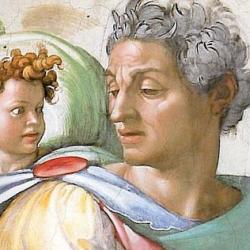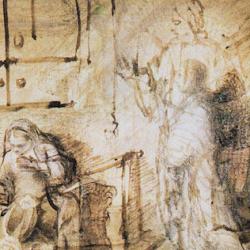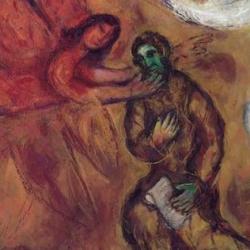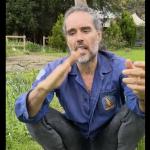Isaiah 34 describes an international liturgical event. The nations are called to gather, but the nations are themselves the sacrificial victims. The sacrifice includes the slaughter of “the host of heaven,” which are cast out to “rot” (v. 4). This is Israel, the heavenly people, and the Lord’s sword is sated with their blood and fat (v. 5) before descending to the representative people of earth, Edom.
Edom’s slaughter is more explicitly a sacrifice. Yahweh’s sword is a sacrificial sword that sheds the blood of lambs, goats, bulls, cuts away the fat of the kidneys, and makes the ground fat (vv. 6-7). Once Edom is slaughtered, it’s time to stoke up the sacrificial fire, which Yahweh does by turning the water, dirt, and land into burning pitch (vv. 9-10). When the Lord’s sacrifice is over, there’s nothing and no one left, only cities emptied of people that have become haunts for wild animals.
Within this sacrificial sequence are (at least) two small chiasms.
Verse 6-7 form a clear chiastic arrangement:
A. Blood, fat, blood, 6a
B. Lambs, goats, rams, 6b
C. Lord’s sacrifice in Bozrah and slaughter in Edom, 6c
B’. Oxen, bulls, 7a
A’. Blood and fat, 7b
Verses 11-15 also form a chiasm, though some of the connections are less clear:
A. Pelican, hedgehog (NASB), owl, raven, 11a
B. Formless and empty, 11b
C. Nobles and kings are nothing, 12
B’. Thorns, nettles, thistles, 13a
A’. City is a dwelling of jackals, ostriches, desert creatures, wolves, goats, night monsters, tree snakes, hawks, 13b-15
Two comments on this last structure. First, though the B sections don’t seem particularly close, they are linked when we consider that both are rooted in Genesis 1-3. Verse 11b describes the destruction of the city as a reduction to tohu and bohu , terms that describe the formlessness of the original creation (Genesis 1:2). Yahweh is constructing chaos. Thorns and thistles are central to the curse of Genesis 3, a curse that returns the land to a semi-formless state; the world after the fall is not empty but the things that fill it need to be subdued; it is not formless but its form is distorted and needs to be re-formed.
Second, there are twelve animals named in the A sections. In Genesis, Edom is a proto-Israel with twelve princes (Genesis 25:16), but after the Lord’s sacrifice the twelve princes of Edom will be nothing. Instead, twelve types of beasts will fill the city.














